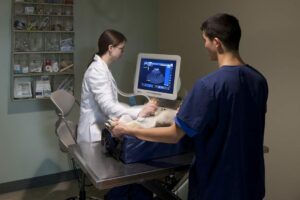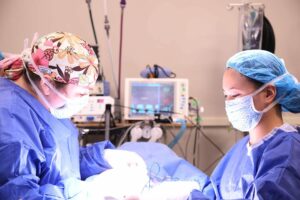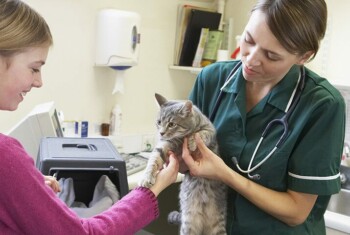Diagnosing gastrointestinal issues with abdominal exploratory surgery.
The gastrointestinal tract consists of a tube that runs from the mouth to the anus. Its function is to digest food and absorb nutrients into the body. The stomach is a dilated part of the GI tract that produces acid, which helps with initial breakdown of proteins. The small intestine extends from the stomach to the colon and serves to further break down food into absorbable nutrients.
The colon is the reservoir for stool, serves as a water absorber, and is the site for production of certain vitamins by bacteria. The colon has a larger diameter than the small intestine, therefore foreign bodies located in the colon usually can be passed with bowel movements.
Reasons for abdominal exploratory.
An abdominal exploratory is a surgery in which an incision is made into the abdomen to examine the internal organs. Reasons to perform such a surgery are to remove tumors, remove foreign objects from the stomach or intestine and to collect biopsies from internal organs.
Signs and diagnosis.
Ongoing weight loss, vomiting and diarrhea are the primary indicators of chronic bowel disease or of  other internal organ disease. Blood work is done initially to rule out a variety of diseases such as kidney failure, liver disease and inflammation of the pancreas. Abdominal ultrasound is very helpful to determine if the patient has tumors in the internal organs or thickening of the bowel.
other internal organ disease. Blood work is done initially to rule out a variety of diseases such as kidney failure, liver disease and inflammation of the pancreas. Abdominal ultrasound is very helpful to determine if the patient has tumors in the internal organs or thickening of the bowel.
Commonly, samples of internal organs are needed to arrive at a diagnosis. These biopsies are sent to a lab where a pathologist examines the tissue under the microscope to make a diagnosis.
Common diseases that are diagnosed by the pathologist include inflammatory bowel disease and a diffuse type of cancer called lymphoma. If inflammatory bowel disease is present, the pathologist will further help define the subtype of inflammatory bowel disease.
Surgery.
An incision will be made into the abdomen to allow the surgeon to examine the internal organs. If a disease is found that can be treated with additional  surgery, such as a tumor or a gastrointestinal foreign body, that surgery will be performed.
surgery, such as a tumor or a gastrointestinal foreign body, that surgery will be performed.
A biopsy of the intestine involves removing a 4 mm circular piece of the intestine and then sewing the hole closed. Commonly, liver biopsies are also taken. In some cases the pancreas is biopsied if pancreatitis is suspected.
While in our hospital, your companion will continue to receive intravenous fluids, electrolytes and in some cases plasma or an artificial plasma product called hetastarch. Your companion will be carefully monitored in the intensive care unit and will be given narcotics to ensure a pain-free recovery. Most patients that have abdominal surgery leave our hospital within 24 to 72 hours.
For more information on this subject, speak to the veterinarian who is treating your pet.


